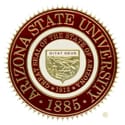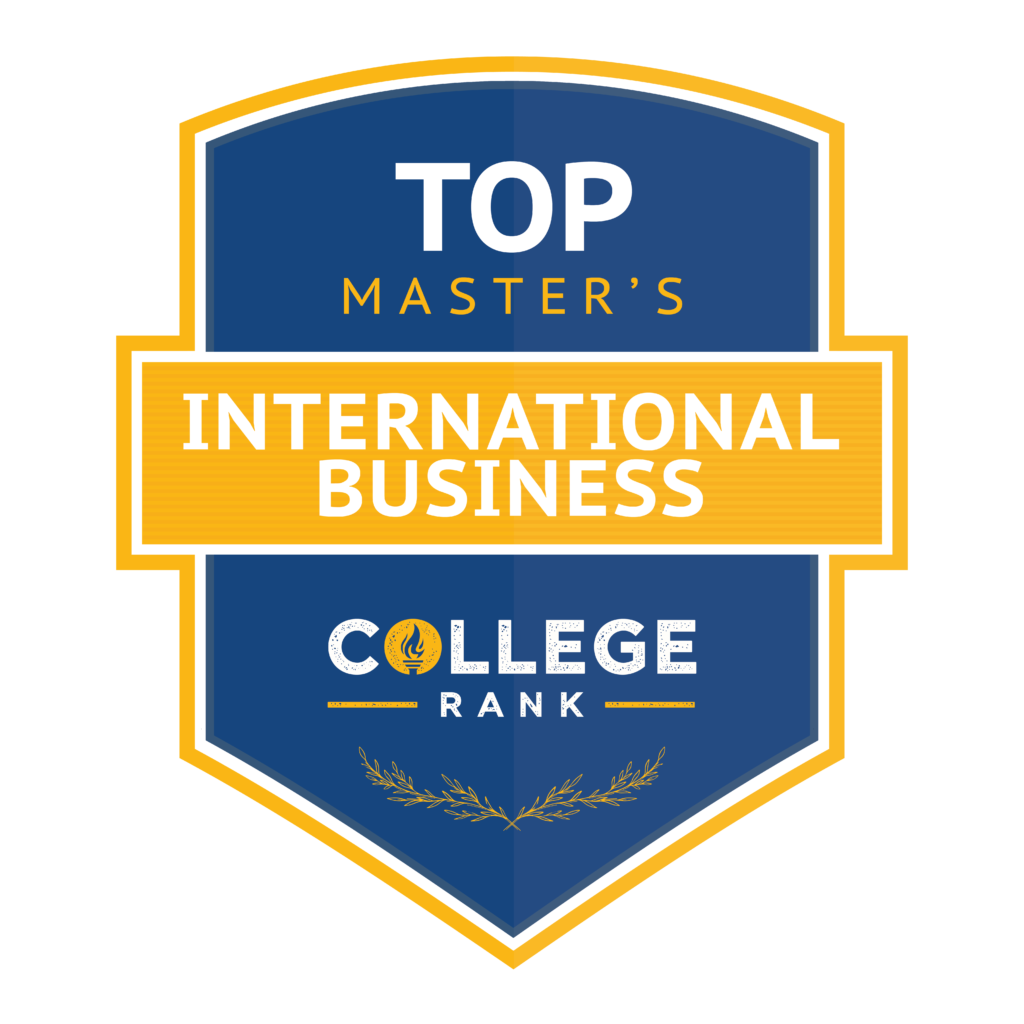In 1908, Harvard University’s Graduate School of Business Administration began offering a new program: the Master of Business Administration degree. More than 100 years since the first MBA class enrolled at Harvard, this master’s degree has become one of the most popular graduate school pursuits in the United States.
Today, schools across the country offer MBAs with concentrations that range from:
- Finance
- Marketing
- Management
- Accounting
However, can you guess what the fastest-growing concentration in business is? International business!
International business master’s programs are growing at the fastest pace. That should come as no surprise in a global economy that depends on managing many cultures, international regulations, and global trade relationships.
Related:
- Best Graduate Entrepreneur Programs
- Top Human Resources Master’s Programs
- What are the different types of business degrees?
- Top Business Law Schools Master’s Programs
- Top Human Resources Master’s Programs
Ranking the Best Programs: Methodology
Students who choose a top online master’s degree in international business have many options. Each school offers a unique list of pros and cons. When ranking online master of international business programs from across the United States, the following factors were taken into account:
Regional Accreditation
For a master’s in international business to be considered for this ranking, it had to be regionally accredited by an organization recognized by the Department of Education. This regional accreditation certifies:
- The program’s rigor
- The standards alignment
- The eligibility for state and federal financial aid programs
Professional Accreditation
Only AACSB-accredited online international business master’s programs were considered for this ranking. Considered the most prestigious ranking organization for schools of business, AACSB Accreditation is often required:
- By employers
- For tuition reimbursement
- For recruiters for hiring MBA graduates
Prestige and Networking Potential
The international business master’s degree is often considered a “networking degree.” That means its coursework is as important as the students who share the online classroom and develop networks.
Prestige is also a part of this calculation. More prestigious international business master’s programs often have:
- More alumni
- A better reputation among recruiters
- Better salaries
- More career options over the long-term
Check out College Rank’s top 15 international business master’s programs.
1. Arizona State University

The W.P. Carey School of Business at Arizona State University is one of the most prestigious business schools anywhere in the country. A leader in online higher education since its inception, W.P. Carey ranks as the 5th best online MBA in the country and the second-best online graduate business school in the United States.
The Wall Street Journal ranked ASU’s business school 19th regarding recruiter preference for hiring MBA alumni. Arizona State University itself is ranked as the most innovative university in America, according to U.S. News and World Report. Among all online MBA programs in the world, the Financial Times lists the W.P. Carey online MBA in tenth place.
Unlike many other universities with an international business program, the W.P. Carey School of Business allows students to pursue either an MBA concentration or a graduate certificate in the field. While the MBA concentration is included in the cost of the MBA program itself, students who want a more in-depth study of international business can opt for a separate certificate and extend their time at the institution.
Like the master’s degree, the certificate can be earned entirely online. Graduate students in the MBA program at Arizona State also have the opportunity to select a 3-day international residency or a full-blown study abroad program to help further their understanding of international management.
2. Northeastern University

Few schools offer as much name recognition and resume prestige at Northeastern University. Located in the city of Boston, Northeastern University has transformed from a commuter school to a major hub of international research.
In fact, the school is home to more than 30 federally funded centers of scholarly research, several of which focus on the evolution and advancement of management concepts. These research centers are open to all online and offline students who wish to participate in scholarly research during the academic year or during term breaks.
The D’Amore-McKim School of Business is among the top international business schools. It ranks fourth in the nation for its online MBA programs. Even better, the school’s international business program is ranked 15th among hundreds of schools, according to U.S. News and World Report. The school has long maintained AACSB accreditation and offers students access to more than 15,000 global alumni, many of whom are in high-ranking executive positions at organizations throughout the United States.
Unlike many other schools with an international business focus, the D’Amore-McKim MBA pursues an emphasis on a global perspective. Students study topics like:
- What globalization means
- How it impacts communities in various countries
- How it will play into the future of management and multinational operations
Globalization is also researched extensively at Northeastern University and offers students a chance to:
- Engage in research
- Meet their professors
- Pursue a more academic future in the business community after graduation
3. University of Nebraska at Lincoln

Another flagship state university campus, the University of Nebraska at Lincoln offers the highest-ranked part-time, full-time, and online MBA degrees in its home state. U.S. News and World Report ranks the school 103rd among all national universities and has awarded its part-time MBA program with a top-15 ranking. The Financial Times ranks UNL’s online MBA as the 12th best online program in the world.
It should also be noted that UNL is one of the Midwest’s largest alumni associations with members from all 50 states and more than 25 foreign countries. The alumni association’s mission is specifically to help students pursue professional opportunities and to enrich the University of Nebraska community after commencement.
Within the international business concentration, UNL does things a bit differently. The school offers what it calls an “international overlay” program. All students must take at least one internationally-focused business course as part of their core. However, international business students can take the full slate of “overlay” courses, giving each of their core courses an international focus.
Electives in highly specific international business courses are also available. A student who wishes to concentrate specifically in international business must take a minimum of 9 credit hours from a pool of relevant electives. An international experience is offered to all students, ranging in duration from 3 days to more than three weeks.
4. The University of Scranton

The University of Scranton’s Kania School of Management offers an online MBA with a similar commitment to Catholic and Jesuit principles. In addition to top national and regional rankings from U.S. News and World Report and The Princeton Review, Scranton’s Kania School of Management has also been recognized as one of the leading schools for students interested in business systems and technology management.
That’s because Kania is part of the SAP University Alliance, which specifically lobbies schools for the teaching of tech-related management courses. These core concepts are integrated into the MBA’s core curriculum, alongside innovative classes in business ethics and charitable enterprises.
While the University of Scranton offers many concentrations, most of which require three courses to complete, the school’s international business concentration is notably more in-depth. In fact, international business graduate students at the University of Scranton must drop one of their core business classes and replace it with an international business elective as a condition of selecting the international business concentration.
Alongside elective courses, Kania School students can also opt to take a 3-day international trip to one of the several destinations in Europe, Asia, or the Americas. Scranton’s alumni association, which is free to all graduates, is strongest in Pennsylvania but serves students around the world with networking, professional education, and social media events.
5. Marist College

Based in Poughkeepsie, New York, Marist College might be most widely known for its political polling operation, but this liberal arts college offers so much more. The online MBA, which recently received full AACSB accreditation, benefits from the school’s reputation as an innovative center of learning.
In fact, the school ranks as both a top Mid-Atlantic institution and a top center of educational innovation according to the U.S. News and World Report. With a more extensive curriculum than many other international business degree programs, students who choose the online MBA from Marist will dive more deeply into issues of:
- Business ethics
- Decision making
- Interpersonal communication
- International business
- Business negotiation
- Business regulation
One thing that sets Marist apart is its convergence of business ethics and the Catholic tradition. As a liberal arts college with Catholic affiliation, the school guides students according to its religious principles when teaching a required course in business ethics.
This ethical commitment is reinforced throughout all 48-course hours in the international business program. International business graduate students also learn the ethical guidelines of multinational management and decision-making. As a result, the Marist MBA has received top marks from “good business” groups and ethical leadership organizations.
6. University of North Dakota

The University of North Dakota is one of the most affordable online options for students considering an MBA with an international business concentration. As a flagship state university, UND is also an excellent choice when it comes to establishing a broad professional network.
The University of North Dakota Alumni Association and Foundation:
- Includes members from across the country
- Maintains a particular interest in institutional advocacy and networking
- Is free to all graduates of the program
Additionally, UND alumni gain the benefit of a top-30 online MBA and one of U.S. News and World Report’s top-ranked National Universities.
While the MBA program at the University of North Dakota is pretty standard for students outside of the international business concentration, online enrollees will notice one big difference at the school. Unlike virtually every other program in this list, the University of North Dakota requires that international business students take no less than nine graduate-level business credits from a foreign institution.
The school offers partnerships for both online and offline coursework that meet this requirement. This is truly one of the best ways to gain a sense of what it’s like to manage a multinational organization. It’s also one of the reasons that the university’s online master’s in international business program ranks so highly in most publications.
7. Washington State University

When it comes to the “heavy hitters” of online, public university MBA programs, Washington State is among the best. The school, which has offered an online version of its MBA degree for well over a decade, is ranked as the 27th best online MBA in the country. Washington State University also ranks 19th among the best online MBA programs for veterans and active military personnel.
Beyond the international business degree itself, Washington State ranks highly for:
- Its emphasis on professional networking
- Its international seminar
- The flexibility of its block-based format for online students
As one of the older international business degree programs in the country, WSU also has an alumni network that spans the globe. More than 20,000 former business students in over 30 countries are members of this crucial network.
Unlike many international business programs, Washington State University encourages students to build a concentration from a massive pool of elective courses. An MBA concentration at the school consists of at least three courses in a narrow area of study. More than ten international business courses are available, in fields like:
- International marketing
- Multinational management
- Global trade
- Economic policy
- International business law
Upon completion of these three courses, students are permitted to apply for the relevant concentration. As long as all three courses are completed with a grade of “B” or better, approval is granted.
8. University of Colorado at Colorado Springs

The University of Colorado’s Colorado Springs campus is the flagship campus of this public university system. The chief rival to Colorado State University and its Global Campus, the online MBA here is ranked even higher than the one at CSU-Global. In fact, the UCCS online MBA ranks as the best in Colorado and the 40th best in the United States.
As one of the oldest business schools in the country, the University of Colorado’s College of Business has maintained AACSB accreditation for several decades. The university also offers membership in a highly awarded Beta Gamma Sigma chapter to high-achieving students in the final year of the master’s in international business program.
Graduate students who choose a concentration in international business at UCCS choose from five courses when building a custom-designed emphasis within their master’s degree. A minimum of three international business courses must be taken to graduate with an IB concentration, though students with advisor permission are invited to extend their residency in the online program and complete the remaining classes if they wish to do so. The capstone course in strategic management allows students to:
- Work with their peers on a management simulation
- Build valuable networking connections
- Develop skills in global management
This master’s in international business will immediately benefit graduates as they pursue management positions.
9. Florida International University

Florida International University is one of the fastest growing schools and also highly affordable. The MBA’s international business concentration, along with the core business curriculum, typically costs between $35,000 and $40,000. That’s well below competing schools in the state.
In addition to affordability, Bloomberg Businessweek ranks the school 8th in the nation for its international business programs. U.S. News and World Report ranks the online MBA among the top 10 in the country.
For maximum flexibility, international business students at Florida International University take courses in 8-week blocks, up to six times per year. The block structure and the 36-credit requirement for graduate students allow some grad students to complete their degree in as little as a year. Others can take two or three years to finish the program, depending on their needs.
An international business student can also opt to pair their MBA with a Master of International Business diploma as well as an international trip to Europe or South America. Graduates join more than 8,500 FIU business school alumni in one of Florida’s largest alumni associations.
10. Central Michigan University

One of the largest public universities in the state of Michigan, Central Michigan University offers a broad array of online programs that include its online graduate degree in international business.
The school proudly boasts that its online degree is ranked 6th out of 148 programs in the United States by U.S. News and World Report. The school also maintains AACSB accreditation and an active chapter of Beta Gamma Sigma, the most prestigious honors society for students in a business school. Aside from the school’s top-notch rankings, the international business master’s program is also innovative regarding its focus areas.
Central Michigan University is one of the several schools that shifted focus to “ethical business” in the aftermath of the financial downturn of 2008. Today, the school is widely regarded as its required course in business ethics, and the ethical component of each concentration offered to students.
In the international business master’s program, graduate students will specifically:
- Work on case studies of international business ethics
- Work through cases of fraud
- Learn how ethical issues in foreign transactions can harm businesses
The master’s degree capstone course further reviews ethical standards and gives MBA graduates the tools they need to make sound decisions in any situation.
11. Florida Atlantic University

Florida Atlantic University has been enrolling students in its best MBA programs for international business since 2000. Over the past 16 years, the school has increased the program’s ranking by U.S. News and World Report with each new review of the program. As of 2023, the school’s Virtual MBA program ranks #7 among online programs in the country and also constitutes a “best value,” according to the U.S. News and World Report.
Alongside its position in the top 10 programs nationwide, Florida Atlantic University also offers the power of a massive alumni network, primarily in the southeastern part of the country, and the value of public college tuition.
Unlike many other online MBA programs, Florida Atlantic University revises its international business curriculum each academic year to ensure that graduate students focus only on the most current and relevant skills in international management. The master’s degree’s 46-credit structure also allows a greater focus on international business skills than many of its peers offer. You will complete 28 core credits and 12 credits in your chosen area of concentration.
To date, more than 15,000 students have taken part in the school’s online MBA offering and 12,000 of them have become part of the FAU alumni network.
12. Southern Illinois University

Southern Illinois University, based in Carbondale, Illinois, is one of the best choices for international business students. Unlike some of its peers, the SIU master’s in international business degree allows students to spend up to one month abroad.
The study-abroad program is offered in partnership with a university in France. This program even allows students to pursue a second master’s in France by extending their stay in the country. This innovative partnership is unlike anything else offered by an online MBA program, and it could be a major factor for international business students who want hands-on experience in a foreign environment.
The rest of the master’s degree in international business consists of 33 total credits in graduate-level business topics. Seven courses focus on a “business core” in:
- Managerial finance
- Advanced accounting
- Interpersonal management
- Marketing
- Business administration
- International business law
The remaining four courses allow students to:
- Choose a concentration in international business
- Study abroad
- Pursue a second master’s degree if they wish
The school ranks at number 153 among National Universities and boasts a network of more than 20,000 business alumni scattered throughout the world.
13. Indiana Wesleyan University

Founded in 1920, Indiana Wesleyan University was originally a religious education institution. However, the school has grown over the course of 96 years to provide a large number of graduate degree programs. One of the newest in the country, the university’s online international business master’s program, uses an innovative approach to graduate education.
Graduate students who choose the international business concentration are given a series of skill-based modules that coincide with the skills they wish to learn. Then, they must enroll in one module at a time. The mastery-based master’s degree requires students to master each individual skill, before moving on to the next module in the series. After completing all modules, students earn the international business graduate degree.
Though the mastery focus of the master’s in international business might sound isolating, most modules are group-focused and centered on a series of relevant case studies. For its efforts at transforming online business education, Indiana Wesleyan University has earned:
- ACSB accreditation
- A top ranking among regional universities in the Midwest
- A top value ranking by U.S. News and World Report
The flexibility of the module-based approach to learning also contributes to the school’s top-25 ranking for veterans and active military personnel.
14. Colorado State University – Global Campus

Colorado State University’s Global Campus is distinguished in several ways for its unique history and its unique approach to providing affordable graduate degrees.
First and foremost, the Global Campus stands out as the first all-online, state-funded, public institution for students in the United States. The school was established by an act of the Colorado state legislature in 2007. Since then, it has been among the fastest-growing, online-only institutions in the country.
CSU Global’s master’s degree programs maintain independent regional accreditation, which is a unique aspect of the school. The university is also one of the few institutions with a “price lock.” This means that students pay the same tuition rate as their first semester for the duration of their enrollment.
As part of the Colorado State University System, CSU-Global offers students the prestige of a major state university on their resume. The university has also been recognized as:
- A top-15 institution for online degree programs by the U.S. News and World Report
- An affiliation with the broader Colorado State University Alumni Association
- A powerful asset when MBA graduates begin building a professional network
- Graduates accepted into high-ranking management positions at global firms
15. University of Wisconsin – Whitewater

The University of Wisconsin System is known as one of the best state university systems anywhere in the country, especially in the Upper Midwest region. Together with other regional campuses, the University of Wisconsin at Whitewater offers an online MBA program with an international business concentration.
This international business master’s degree allows students to:
- Take courses from several different University of Wisconsin campuses
- Select from among the best business professors at each institution
- Tailor the program to their unique interests within international business
While the University of Wisconsin name itself is quite prestigious in the United States, the Whitewater campus that awards the online MBA program is ranked among the 50 best colleges and universities in the Midwest by U.S. News and World Report.
The school also ranks as one of the best public schools and one of the top choices for military veterans, according to the U.S. News and World Report. The publication also ranks the part-time, online MBA as one of the top 200 such programs available to students across the country. As a result, enrollment is growing fast, and the number of courses available continues to increase annually.
Frequently Asked Questions
A graduate degree in international business is worth it because it makes you highly employable. Your expertise in this field will be highly sought-after as more and more businesses globalize. Your degree will also be worth it from a financial perspective – graduates with international business experience can easily make six figures. This degree also opens doors to working domestically, internationally, or both. If you enjoy traveling and experiencing other cultures, this degree prepares you to do so.
The average Master of Business Administration program in the U.S. costs nearly $72,000, according to the Education Data Initiative. The per-program cost varies widely, though. MBAs from public universities might cost less than $25,000. But MBAs from prestigious schools, like Harvard, cost more than $115,000.
Yes, scholarships and other aid are available for international business master’s programs. However, the competition for financial aid is often intense. You can better your chances of getting merit-based scholarships by performing well in your undergraduate studies. Participating in work-study programs can also help defray the costs of your graduate degree. Some schools also offer grants and teaching assistantships that are used to reduce the cost of the degree.
Typical international business graduate programs are 30 or more credits. Full-time graduate students can complete these credits in two years. These programs often have a mix of classroom studies and experiential learning opportunities that allow you to practice your skills in a real-world setting. Common courses include International Finance, Cross-Cultural Management, and Human Resources. International Trade and Development, International Business Negotiations, and professional development courses are often required as well. Likewise, most international business programs include mentorship and networking opportunities that further your competence in applying business principles to global economies.
International business isn’t a very technical major, which makes it an easier graduate degree than some. However, you must master complex topics involving domestic and international business concepts, intercultural communication, and finance, to name a few. This requires the utmost dedication to your studies. With the appropriate level of time and effort over the course of two or more years, you can graduate with relative ease.
You need about two years of full-time studies to complete most graduate programs in international business.
Global project management is a common career for MBA graduates in international business. This job entails supervising a company’s activities across countries, from project conception to implementation to evaluation. Another popular option is to work as a risk manager. This position evaluates areas of potential harm that can negatively impact business operations, finance, and employee performance and safety, among others.
Additional career options include the following:
• Finance Manager
• Business Development Manager
• Economist
• Information Security Analyst
• Supply Chain Manager
According to ZipRecruiter, the average annual salary for international business in the U.S. is just over $119,000. Workers in the bottom 25 percent earn an average of $93,000. Workers in the 75th percentile earn more than $139,000 on average. Top earners can make in excess of $175,000 per year. Your salary depends on many factors, though: how much experience you have, your level of education, and the specific area of international business in which you work. Other factors include where you’re employed and the geographic area where you work.
According to Indeed, the highest paying job in international business is Chief Marketing Officer. The national average salary for this position is nearly $130,000 per year.
